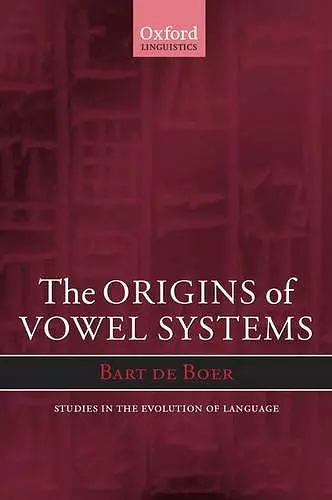The Origins of Vowel Systems
Format:Hardback
Publisher:Oxford University Press
Published:23rd Aug '01
Currently unavailable, and unfortunately no date known when it will be back
This hardback is available in another edition too:
- Paperback£34.49(9780198299660)

This book addresses the question of how the properties of human vowel systems can be explained. Though it is found that vowel systems of human languages are optimal for communicative purposes, it is not clear who is doing the optimization. If children learn a language, they learn to produce sounds that are as close as possible to those used by their parents and peers. The hypothesis is put forward that the optimization is the result of self-organization in a population of language users. Self-organization is the emergence of order on a global scale in a system where there are only local interactions. It is a phenomenon that appears in many natural systems from purely physical ones, such as crystals, to systems composed of living organisms, such as colonies of insects. Recent developments in linguistics indicate that self-organization might also play an important role in language. The theory is put to the test by implementing it as a computer model. This computer model simulates the interaction in a population of artificial 'agents' that can each produce and perceive vowels in a human-like way. The vowel systems that emerge from the computer simulations closely resemble human vowel systems. It is also shown that many simple variations on the basic system can be investigated, thus providing valuable insight into the dynamics of systems of speech sounds. The ultimate aim of the book is to provide insight into how language has evolved. It turns out that the mechanism of self-organization can make it easier to explain the evolution of language, since it provides an alternative mechanism for the emergence of certain linguistic structures.
ISBN: 9780198299653
Dimensions: 245mm x 164mm x 18mm
Weight: 437g
184 pages